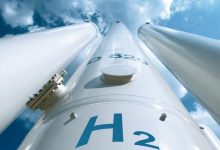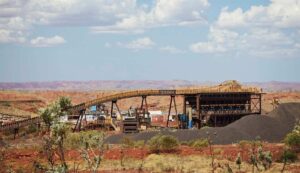As Australia and the world come to grips with the Covid health and economic crises, it must also tackle the pan-generational crisis of climate change. Hydrogen is a key part of the solution and can be derived from a variety of sources. It can be Green, Blue, Grey, Brown, Black (and colours in between).
So why the colours? Well, Hydrogen can be made from renewable sources such as wind and solar power; and it can be made from fossil fuels including gas and brown coal.
The colours act as useful markers for showing how the hydrogen was produced and allows governments, businesses and communities to evaluate their downsides compared to the advantages of clean, zero-emissions products.
- Green Hydrogen is from 100% zero-emissions renewable sources such as wind and solar;
- Blue Hydrogen is where the process produces Hydrogen without the production of additional emissions (e.g. using nuclear power);
- Synthetic Blue is where the process uses technology (e.g. Carbon Capture & Storage, carbon credits) to achieve net-zero emissions; and
- Grey, Brown or Black Hydrogen is where it is produced (usually from natural gas or brown coal) with additional emissions.
For hydrogen to be truly ‘clean’ it must be made with renewables, not fossil fuels. If Australia is to maximise the potential for hydrogen exports to countries including Japan, South Korea and Germany – it is critically important that trading partners have confidence in the quality of our hydrogen.
The global market for technologies to support renewable power generation, energy storage and hydrogen production was calculated at €508 billion in 2016 and is projected to grow by around 80 per cent by 2025, to €897 billion.
 Australia will need to accept the demands and needs of international buyers and that will likely be Japan, South Korea, Singapore and countries in Europe, including Germany. These markets are increasingly likely to require certification of ‘green hydrogen’ as they decarbonise their economies in line with Paris goals.
Australia will need to accept the demands and needs of international buyers and that will likely be Japan, South Korea, Singapore and countries in Europe, including Germany. These markets are increasingly likely to require certification of ‘green hydrogen’ as they decarbonise their economies in line with Paris goals.
According to the German National Hydrogen Strategy released on 10 June 2020, “only hydrogen produced on the basis of renewable energies (‘green’ hydrogen) is sustainable in the long term.”
Germany intends to use its Covid stimulus package to expand the role of green hydrogen to help end the country’s reliance on coal. The German national government has a plan and is going to spend €9 billion on green hydrogen. The plan for Germany is to see green hydrogen eventually make up about 10% of the country’s total electricity capacity.
The Australian National Hydrogen strategy uses the term “clean hydrogen” for hydrogen produced from renewable electricity, and from coal or gas with carbon capture. And it assumes a “best-case” scenario where 90-95% of carbon dioxide is captured from fossil fuels.
These capture rates are optimistic, to put it mildly. Australia has invested hundreds of millions of dollars into trying to make big cuts in emissions from brown coal power generation (including Carbon Capture and Storage) for decades to no avail.
Another risk is that ‘carbon capture will not be able to achieve the best-case rates for technical or cost reasons’– allowing large amounts of greenhouse gas to enter the atmosphere, similar to the Gorgon LNG case in Western Australia. This has the potential to diminish Australia’s brand for producing and exporting clean-green hydrogen.
Assuming blue hydrogen and synthetic blue hydrogen will be zero-emissions would be a triumph of hope over experience. Therefore, many people are advocating for Australia to invest in hydrogen initiatives, including certification schemes, which promote clean hydrogen and not hydrogen from fossil fuels.
The Commonwealth Department of Industry, Science, Energy and Resources is currently consulting on the high-level aspects of an international or domestic hydrogen certification scheme. Survey closes 22 June 2020.
The hydrogen certification developed for Australia needs to be simple, transparent and consistently applied. It will need to be flexible in its design and keep compliance costs as low as possible.
Let’s not reinvent the wheel. Australia should make the best use of existing models from overseas. The system of Guarantees of Origin (GO) for renewable electricity which was introduced in the EU is a good place to start. Furthermore, an initial certification scheme akin to ‘Green Power’ (first developed in the 1990s in Australia) is recommended for ‘Green Hydrogen’ certification in Australia.
Australia needs to move rapidly and implement a hydrogen certification scheme to access international markets, but let’s not get distracted with anything less than a green hydrogen certificate scheme. To do otherwise would be a fool’s errand.
Decisions made now on climate goals, technology roadmaps and supporting schemes will determine our energy future, and therefore our planetary future.
The Commonwealth Department of Industry, Science, Energy and Resources is currently consulting on the high-level aspects of an international or domestic hydrogen certification scheme. Survey closes 22 June 2020.
Scott Hamilton is a director of H4CO and panel member of the Australian-German Energy Transition Hub












